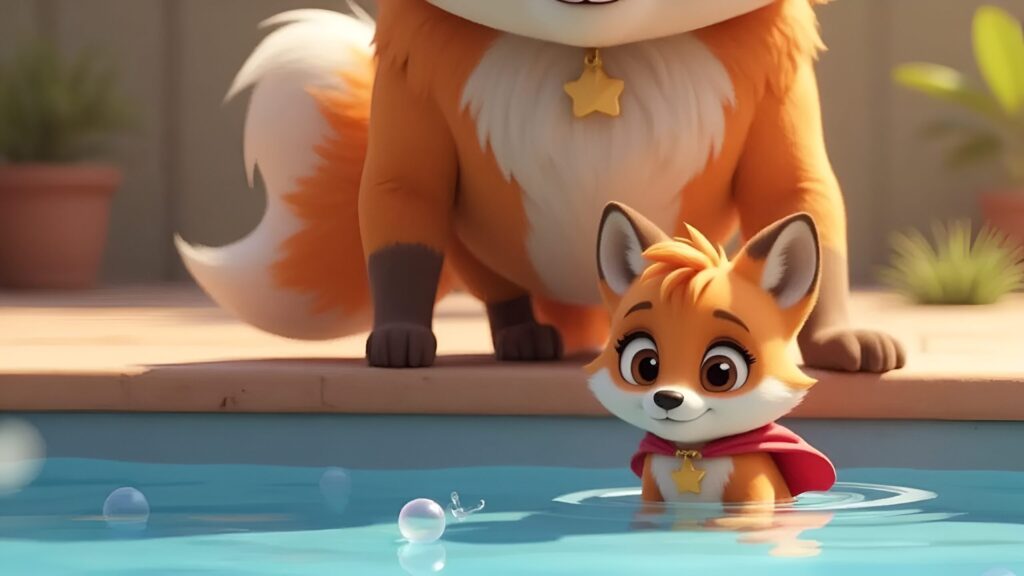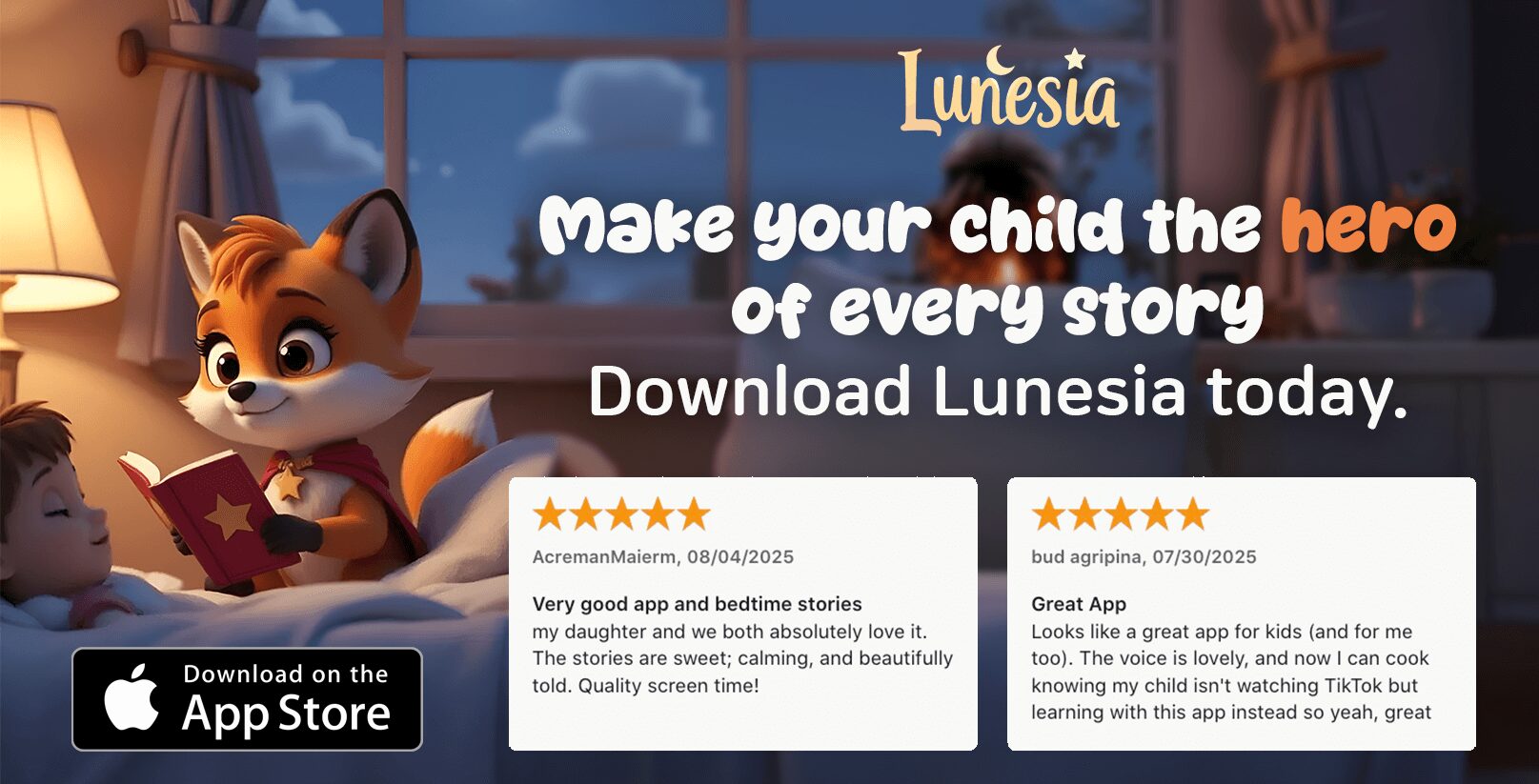This article is dedicated to parents who are looking for effective ways to help their children overcome the fear of water, especially the anxiety of diving and putting their face underwater. In this guide, you will discover the psychological roots of this common fear and learn practical techniques to transform water time into a joyful, confidence-building experience. With personal anecdotes and hands-on advice, I share the methods I’ve used in my own journey as a swimming coach to guide children through their initial trepidation toward becoming confident swimmers. You’ll learn how simple tools—like a mirror, playful games, and breathing exercises—can turn a daunting challenge into an exciting adventure.
This guide is crafted to be SEO-friendly, integrating keywords such as “fear of water,” “child diving,” “swimming lessons,” and “overcoming water fear” naturally throughout the text. My goal is to provide you with a resource that not only ranks well on Google but also delivers genuine, actionable advice that you can implement immediately. Whether your child has had a past unpleasant experience or simply struggles with the unknown depths, this article offers a compassionate, step-by-step approach tailored to meet their needs. Let’s dive into a world where fear transforms into fun and where every splash is a step towards empowerment!
I remember the first time I witnessed a child’s hesitation at the pool’s edge. You know, that moment when you see a little one standing with wide eyes, gripping your hand tightly as if the water itself were a mysterious, threatening force. I felt a mix of empathy and determination because I, too, have faced my own challenges with water in the past. It wasn’t just about teaching swimming techniques—it was about building trust, understanding the underlying fear, and creating a safe, playful environment where every child feels secure.
Today, I’m here to share not only professional insights but also personal stories, including my early mistakes and the lessons I learned the hard way. Together, we’ll explore effective strategies, fun exercises, and the importance of individualized attention when helping your child conquer the fear of diving. So grab a towel, take a deep breath, and let’s embark on this journey towards water confidence with a smile and a few playful emojis along the way! 😊
Understanding the Fear of Water and Diving
It’s not uncommon for children to feel uneasy about diving into water even when they enjoy splashing around. Many times, the real challenge lies in the act of submerging their face, which can trigger feelings of vulnerability and a fear of the unknown. I’ve seen firsthand how a simple hesitation to dive can stem from a combination of past negative experiences and the natural instinct to protect oneself. In my early days as a coach, I encountered several children who would freeze at the thought of putting their face in the water—a reaction that was both instinctive and entirely understandable. This isn’t just a fear of water; it’s a deeper anxiety about losing control, experiencing short, irregular breathing, and feeling overwhelmed by the unfamiliar sensations. Recognizing that each child’s fear is unique is the first step in addressing it. So, ask yourself: what could be triggering this fear in your child, and how can you create an environment that feels safe and reassuring?
Understanding the psychological aspects behind this fear is crucial. Many children associate water with danger due to previous experiences or simply because the vast, deep blue appears intimidating. I recall a session where a young swimmer, eyes wide with apprehension, clung to the poolside—clearly overwhelmed by the idea of diving. This experience taught me that it’s not the water itself they fear, but the loss of control it represents. The uncertainty of what lies beneath the surface can be enough to halt a child’s progress before they even take the plunge. By identifying these triggers and addressing them directly, we can gradually help children learn that the water is not something to be feared, but rather an environment filled with possibilities for fun and growth.
Common Causes of Fear: Personal Reflections and Observations
Many factors can contribute to a child’s fear of diving, and over the years, I’ve observed several recurring themes. One major cause is a previous unpleasant experience—perhaps a minor mishap that left a lasting impression. I vividly remember the story of a little boy who once accidentally swallowed a bit of water during a playful splash; that incident turned his fun day at the pool into a moment of terror. Such episodes can imprint on a young mind, making every subsequent encounter with water a potential trigger for anxiety.
Another cause is the fear of the unknown. Imagine standing before a giant mirror and not knowing what to expect from the reflection—this is similar to how children perceive the depths of a pool. The unfamiliarity and unpredictability of the underwater world can evoke an intense fear of losing control. It’s not simply a fear of water; it’s the fear of what lies beneath the surface and how their body might react in an environment they do not fully understand. Often, this fear manifests as irregular breathing, which in turn makes it even harder for the child to submerge their face or dive confidently.
In many cases, the fear of water is compounded by a lack of clear, supportive guidance. Without a trusted figure to explain what to expect and how to gradually ease into the water, children can quickly become overwhelmed. I’ve seen parents and coaches jump straight into diving exercises without first establishing a sense of security, only to find the child retreating even further into their shell of apprehension. This is why a tailored, patient approach is essential—one that respects the child’s pace and builds trust gradually. So, reflect on your own experiences: did you ever encounter a situation where the unknown seemed scarier than the actual challenge? Chances are, you have a story or two that can help you connect with your child on this topic.
Practical Techniques to Overcome the Fear
Helping your child overcome their fear of diving involves a blend of psychological reassurance, practical exercises, and playful experimentation. Over the years, I’ve experimented with numerous techniques, and some have proven particularly effective. The key is to approach each session with empathy, clarity, and a healthy dose of creativity. In this section, I’m going to share with you three main strategies that have consistently worked for me and many other swimming coaches.
The Mirror Technique: Reflecting Confidence
One of the most innovative techniques I use is the mirror method. By placing a mirror just below the water’s surface, children no longer see the intimidating depths of the pool—instead, they see their own reflection. This simple trick creates a sense of familiarity and control. I remember the first time I introduced this idea; a shy little girl’s eyes lit up as she saw her reflection smiling back at her. It was a transformative moment because the mirror shifted her focus from the overwhelming blue to something she recognized and trusted.
When using the mirror, make it a fun exercise. Encourage your child to make silly faces, wave, or even pretend to chat with their reflection. The goal is to create an association between water and positive, playful experiences. Over time, as your child grows more comfortable, gradually encourage them to immerse parts of their face. Start with the nose and chin, and slowly work your way up to submerging the entire face. This gradual process helps build confidence, ensuring that each step feels safe and controlled. Remember, it’s all about making the unfamiliar feel familiar, one smile at a time! 🙂
Gradual Immersion and Breathing Exercises
Another cornerstone of overcoming water fear is mastering the art of breathing underwater. I often emphasize the importance of learning how to hold one’s breath and create bubbles in a fun, relaxed manner. In my early coaching sessions, I discovered that many children’s fears were alleviated when they understood that water wasn’t a threat but a medium in which they could control their breath.
Begin by having your child practice holding their breath above water, then slowly introduce the concept of blowing bubbles. Encourage them to blow through both their mouth and nose, turning it into a playful challenge. For instance, you can say, “Let’s see who can make the biggest bubble!” This not only distracts them from their fear but also teaches them a crucial survival skill in the water. Gradually, once they become comfortable with these exercises, start incorporating short submersions—always with clear, reassuring guidance. It’s essential to announce every step; for example, count aloud “One, two, three—dive!” so they know what to expect next. This methodical, step-by-step approach helps transform the act of diving from a moment of terror into a predictable, manageable routine.

Using Toys and Games to Create a Motivating Environment
Children are naturally drawn to play, so why not use this to your advantage? I’ve found that incorporating toys and playful challenges can be incredibly effective in reducing water anxiety. One of my favorite exercises involves placing colorful, plasticized cartoon characters or sinkers at the bottom of the pool. The idea is to create a “treasure hunt” scenario where your child has a goal—finding and retrieving their favorite toy.
This game not only distracts them from the fear of diving but also injects an element of excitement into the experience. I often tell my students, “Imagine you’re on a secret mission to rescue your superhero friend from the deep sea!” Such imaginative play transforms a daunting task into a fun adventure. Always tailor the game to your child’s interests; if they love animals, opt for plastic sea creatures like fish, octopuses, or seals. The key is to create a safe, engaging environment where every dive is a mini-adventure. And don’t forget to celebrate even the smallest progress—it goes a long way in building confidence!
Step-by-Step Tutorial: How to Help Your Child Dive Confidently
Now that we’ve explored several practical techniques, let’s break down a comprehensive, step-by-step tutorial that you can follow with your child. This guide is designed to be as straightforward as possible, ensuring that every stage is both fun and effective.
Establish a Trusting Environment
Begin by creating a calm and reassuring atmosphere. Sit with your child by the poolside and talk about the water in a positive, non-threatening way. Share stories about your own experiences and emphasize that the water is a friend, not a foe. Let them know that it’s perfectly normal to feel a bit scared and that you’re there to support them every step of the way.Introduce the Mirror Technique
Place a waterproof mirror near the shallow end of the pool. Encourage your child to look at their reflection and play with it. Make funny faces, wave at each other, and laugh together. This exercise helps shift their focus from the intimidating pool depths to something familiar—their own smiling face. Use encouraging phrases like, “Look how brave you are!” and “I see a superhero in the water!” 😊Practice Breathing Exercises on Dry Land
Before entering the water, practice holding your breath and blowing bubbles on dry land. Turn it into a fun game by seeing who can blow the biggest imaginary bubble. This exercise will help your child understand the importance of controlled breathing and get them accustomed to the sensation of exhaling slowly. Emphasize that proper breathing is key to feeling relaxed underwater.Gradual Immersion of the Face
Once your child is comfortable with the mirror and breathing exercises, move to the next step: gradually immersing parts of the face. Start by dipping the chin and then the nose. Keep the mirror close by so that they can still see their reflection. Announce each step clearly with a countdown, for example, “One, two, three—chin in!” and gradually progress to submerging the entire face. This controlled, step-by-step process is crucial in building trust and reducing anxiety.Engage in a ‘Treasure Hunt’ Game
Now, introduce a playful element by scattering a few waterproof toys or cartoon characters on the pool’s bottom. Challenge your child to dive and retrieve a specific toy. This game not only distracts from the fear but also gives them a tangible goal to focus on. Use phrases like, “Can you rescue the little fish?” or “Let’s go on an underwater adventure!” Turning the activity into a game makes the learning process both fun and memorable.Encourage a Secure Embrace
At times, allow your child to hold onto you tightly while they attempt a dive. This physical reassurance can be incredibly comforting and helps them feel protected. Explain that you’re always there to support them and that they can trust you completely. This emotional bond is key to transforming their fear into confidence.Celebrate Every Milestone
Finally, celebrate every little achievement. Whether it’s successfully submerging their face or retrieving a toy, take the time to cheer them on. Positive reinforcement—applauding their efforts, giving high-fives, and even using small rewards—will motivate them to keep trying. Remind your child that every step counts and that the journey to becoming a confident diver is paved with small victories.
By following these steps consistently, you’ll gradually build your child’s confidence in the water. Each session might take a bit longer than expected, and that’s perfectly okay. The important thing is to keep the experience positive, engaging, and tailored to your child’s pace. Soon enough, you’ll see that hesitant little splash transform into a joyful dive into the deep blue!
Fun Games and Exercises to Build Water Confidence
Engaging your child in fun and imaginative games is one of the best ways to diminish their fear of water. The more enjoyable the experience, the easier it is for them to forget about their anxiety and focus on the excitement of learning. Over the years, I’ve curated a variety of games that not only improve water skills but also boost overall confidence. Here are some of my favorites:
The Underwater Treasure Hunt:
Hide several waterproof toys at the shallow end of the pool and let your child “hunt” for them. This game transforms diving into a treasure-seeking mission and adds an element of excitement to every splash.Bubble Blowing Contest:
Challenge your child to see who can blow the biggest or the most bubbles. This fun contest teaches controlled breathing while turning a simple exercise into a playful competition.Cartoon Character Rescue:
Print and laminate your child’s favorite cartoon characters and place them at the pool’s bottom. Encourage them to dive and “rescue” the character, transforming a potentially scary dive into a mission with a rewarding goal.Underwater Tag:
Once your child becomes a bit more confident, engage in a gentle game of tag underwater. This not only builds swimming skills but also reinforces that water is a fun, shared space.
These games are not only entertaining but also serve as practical exercises that gradually increase your child’s comfort with water. The key here is consistency and patience—repeated exposure to positive experiences in the water will naturally build confidence. Always remember to celebrate every success, no matter how small. Over time, these fun activities can become the cornerstone of your child’s journey to becoming a fearless, confident swimmer.
To give you an idea of how these games compare in terms of benefits, take a look at this table:
| Game | Focus | Benefits | Age Range |
|---|---|---|---|
| Underwater Treasure Hunt | Diving & Retrieval | Enhances diving skills, builds focus, and transforms fear into fun | 4-10 years |
| Bubble Blowing Contest | Breathing Control | Teaches proper breathing technique and relaxation | 3-8 years |
| Cartoon Character Rescue | Motivation & Imagination | Boosts confidence through a playful mission and familiar characters | 4-10 years |
| Underwater Tag | Swimming & Agility | Encourages physical activity, teamwork, and water comfort | 5-12 years |
These games not only make the learning process enjoyable but also provide measurable benefits that can be tailored to your child’s individual needs. Always keep an eye on their reactions and adjust the games accordingly to ensure they remain both fun and effective.
Expert Tips, Tools, and Resources for Parents
Navigating your child’s fear of water can feel overwhelming at times, but you’re not alone in this journey. As an experienced swimming coach, I’ve gathered several expert tips and tools that can make a significant difference. Here are some essential pointers and resources that I highly recommend:
Personalized Coaching:
Every child is unique, and what works for one may not work for another. It’s crucial to adopt a personalized approach. Whether it’s one-on-one coaching or small group sessions, individualized attention helps address specific fears and adapt techniques to your child’s pace.Patience and Consistency:
Progress in overcoming water fear is often gradual. Celebrate small victories and remain consistent with practice sessions. Remind yourself that setbacks are a natural part of the learning process, and every child advances at their own rate.Use of Visual Aids and Technology:
I personally love using visual aids like mirrors, underwater cameras, or even simple waterproof toys to capture and replay moments of success. On that note, if you’re looking for a digital solution to track your child’s progress, I highly recommend checking out Lunesia. This app has been a game-changer for many parents and coaches, providing tools to schedule sessions, record milestones, and share progress updates in a user-friendly interface. It’s an excellent way to integrate modern technology into traditional coaching methods.Join a Community:
Sometimes, sharing experiences with other parents who are facing similar challenges can be incredibly reassuring. Online forums, local swim clubs, or community groups can provide support, exchange tips, and even recommend trusted coaches in your area.Educational Resources:
Invest time in learning more about child psychology and water safety. Books, reputable websites, and even short courses can offer deeper insights into why children develop these fears and how to address them effectively.
Here are a few recommended resources that have helped many parents and coaches:
- Swim England: Offers detailed guidelines and tips on children’s swimming and water safety.
- American Red Cross: Provides instructional videos and courses on water safety for children.
- Local Swim Clubs: Often offer personalized sessions that focus on both safety and confidence-building.
- Lunesia App: As mentioned, this innovative tool can streamline your coaching sessions and track your child’s progress with ease.
These expert tips and resources are designed to equip you with a well-rounded approach to overcoming your child’s fear of water. Remember, you’re building not just a swimmer, but a confident individual who can face challenges head-on with a smile. 👍
Comparison of Techniques: Which Approach Suits Your Child?
Choosing the right approach for helping your child overcome their fear of water is essential. Different techniques work better for different children, and sometimes combining methods is the key to success. Below is a comparative overview of the various techniques discussed, their benefits, and practical tips to consider:
| Technique | Description | Benefits | Tips |
|---|---|---|---|
| Mirror Technique | Using a waterproof mirror to help the child see their reflection | Reduces fear of the unknown; builds familiarity | Start with short sessions; encourage playful interactions |
| Gradual Immersion & Breathing | Slowly introducing parts of the face underwater while practicing controlled breathing | Teaches proper breathing; builds trust and comfort with water | Count aloud and announce each step clearly |
| Toy & Game-Based Approach | Incorporating toys, cartoon characters, and fun challenges | Turns diving into an engaging adventure; distracts from fear | Choose toys that align with the child’s interests |
| Secure Embrace Technique | Allowing the child to hold onto a trusted adult during diving | Provides emotional security; reinforces trust | Always be present and reassuring during the exercise |
This table should help you decide which technique—or combination of techniques—best suits your child’s needs. It’s all about trial and error, observation, and most importantly, patience. Every small success builds towards a more confident, fearless dive.
Final Thoughts: Empowering Your Child to Embrace the Water
Watching your child overcome their fear of water is one of the most rewarding experiences as a parent. Every hesitant step, every playful splash, and every brave dive marks a significant milestone in their journey toward confidence and independence. As you implement these strategies—from the mirror technique to the engaging games and step-by-step tutorials—remember that your patience, love, and consistent support are the true catalysts for change.
I’ve been in your shoes, watching a little one’s fear gradually transform into joy and freedom in the water. These methods are not magic cures; they are proven, practical steps that, when applied with care and understanding, can truly change the way your child interacts with water. The key is to celebrate every achievement, however small, and to use every session as an opportunity to build trust and resilience. Don’t be discouraged by setbacks; every challenge is just a stepping stone to a more confident future. Embrace these moments with a smile, and let the journey transform not just your child’s relationship with water, but your own perspective on overcoming fears.
So why wait? Dive into these techniques, try out the fun games, and perhaps even integrate innovative tools like the Lunesia app into your routine. Together, we can turn fear into fun, and transform the pool from a place of anxiety into a realm of endless possibilities. Your child’s future in the water is bright—let’s make every splash count! 😎
FAQ
How can I tell if my child’s fear of water is a normal phase or something that needs professional attention?
Often, a mild reluctance to dive or submerge the face is perfectly normal as children adjust to new experiences. However, if your child consistently exhibits extreme anxiety, refuses to engage in any water activities, or if their fear begins to impact other areas of their daily life, it may be a good idea to consult a professional coach or a child psychologist. Remember, each child is unique, and sometimes a tailored approach is required.
What if my child has had a previous unpleasant experience with water?
A past negative experience can certainly leave a lasting impact. The key is to gradually reintroduce water in a positive, supportive environment. Start slowly by building trust through playful exercises and reassurance. Using techniques such as the mirror method and incorporating fun games can help your child reframe their memories and build new, positive associations with water.
How long does it typically take for a child to overcome their fear of diving?
There isn’t a one-size-fits-all answer. Some children may start feeling more confident within a few sessions, while others might take several weeks or months. The most important aspect is consistency and patience. Celebrate every small win and adjust the pace based on your child’s comfort level.
Is it safe to use toys and games in the pool to encourage diving?
Absolutely! In fact, using waterproof toys, cartoon characters, and even simple games like “treasure hunts” can significantly reduce anxiety by turning a daunting task into an enjoyable challenge. Just be sure to choose toys that are appropriate for your child’s age and always supervise closely during these activities.
Can technology, like the Lunesia app, really make a difference in managing my child’s progress?
Yes, technology can be an excellent supplementary tool. The Lunesia app, for example, helps you schedule sessions, track progress, and even share milestones with friends or family. It can streamline your coaching routine and ensure you’re staying consistent with your methods. Integrating technology with personal attention can offer the best of both worlds for effective water confidence building.
Should I always be physically present with my child during these exercises?
It is highly recommended, especially in the beginning. Your presence provides a sense of security and reassurance that can make a significant difference in your child’s comfort level. Over time, as your child’s confidence grows, you may gradually give them a bit more independence, but always keep a watchful eye to ensure their safety.
What other resources can help me learn more about overcoming water fears in children?
There are numerous reputable resources available. Look for local swim clubs that offer specialized children’s sessions, educational websites from recognized organizations like the American Red Cross, or community groups where parents share their experiences. Books and online courses on child psychology and water safety can also provide deeper insights and further practical advice.




